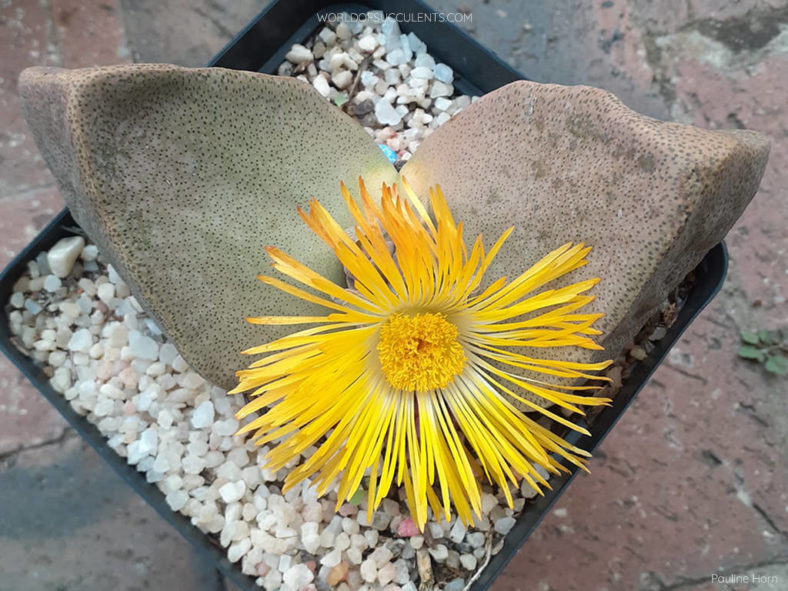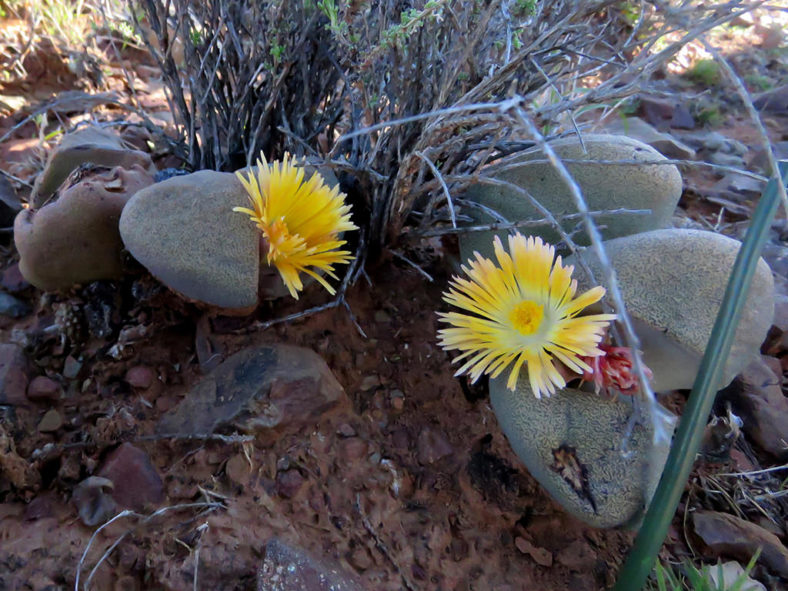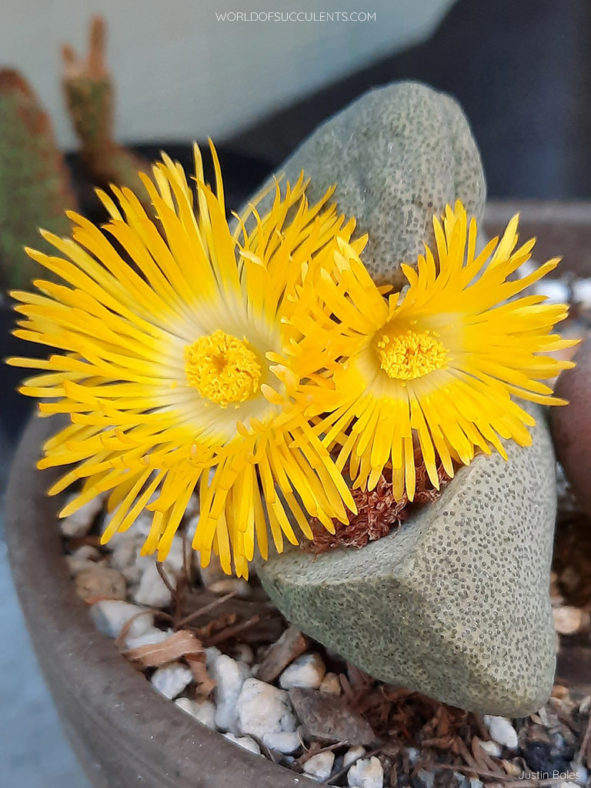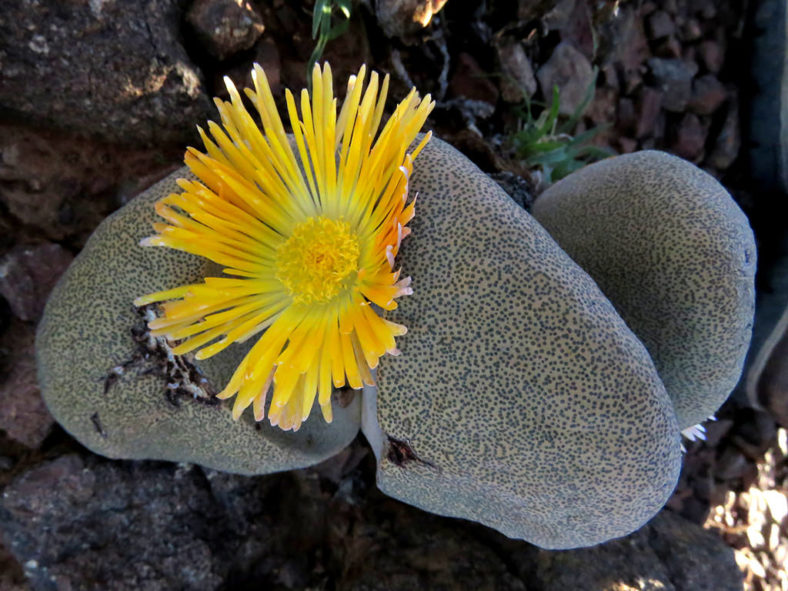Pleiospilos bolusii is a lovely small plant with a stone-like appearance. It is a recipient of the prestigious Award of Garden Merit of the UK's Royal Horticultural Society.
Scientific Name
Pleiospilos bolusii (Hook.fil.) N.E.Br.
Common Name(s)
African Living Rock, Living Rock Cactus, Mimicry Plant
Synonym(s)
Mesembryanthemum bolusii, Pleiospilos barbarae, Pleiospilos beaufortensis
Scientific Classification
Family: Aizoaceae
Subfamily: Ruschioideae
Tribe: Ruschieae
Genus: Pleiospilos
Etymology
The specific epithet "bolusii" (pronounced bol-LOO-see-eye) honors Harry Bolus (1834-1911), a South African botanist, botanical artist, businessman, and philanthropist.
Origin
Pleiospilos bolus is native to South Africa. It occurs from Willowmore and Aberdeen in the Eastern Cape to Beaufort West in the Western Cape province. This species grows in quartz flats in karroid shrubland at elevations between 2,460 and 3,610 feet (750 and 1,100 m).
Description
Pleiospilos bolusii is a dwarf succulent with two or four opposite, quite thick leaves fused at the base. It can grow up to 3.2 inches (8 cm) tall, usually solitary, but can form a small clump with age. The leaves are grey-green or brownish with many tiny, dark spots. They are broader than long and almost triangular in cross-section. A new pair of leaves is produced each year, replacing an older one.
From late summer to early fall, Pleiospilos bolusii produces yellow, often coconut-scented flowers that open in the afternoon and close at sunset over a bloom period of several days. The flowers appear from the center of the leaves, usually solitary or in groups of up to 3. They can reach a diameter of 3.2 inches (8 cm). The fruits are dark brown, woody capsules with 10 to 12 locules.
Pleiospilos bolusii is similar to Pleiospilos nelii, but it has longer, more angular leaves and yellow instead of yellow-orange to salmon flowers.

How to Grow and Care for Pleiospilos bolusii
Light: This succulent requires bright light but not too much direct sunlight. So, a windowsill that receives 4 to 5 hours of direct sunlight in the morning and partial shade in the afternoon will be a perfect spot for indoor growing.
Soil: Pleiospilos bolusii thrives in porous soil that allows water to drain away quickly. Therefore, use commercial soil for succulents or make your own well-draining mix.
Temperature: High temperatures are not a problem as long as there is plenty of fresh air, but this plant is not cold-hardy. It grows best in USDA Plant Hardiness Zones 9b to 11b, with average minimum winter temperatures ranging from 25°F to 50°F (- 3.9°C to 10°C).
Watering: To keep your plant healthy, it's essential to know when, how much, and how often to water. Pleiospilos bolus requires little or no water during its dormancy, usually in summer. Once it grows again in the fall, water thoroughly but allow the soil to dry between waterings.
Fertilizing: As long as you repot this plant every two years, it does not need fertilizer.
Repotting: Even if your plant can stay happy in the same pot for years, you can repot it occasionally to give it more space during the growing season. However, the best time is at the beginning of the season.
Propagation: Although it is usually started with seeds, Pleiospilos bolusii can also be easily propagated by division. Late summer, just before the plant begins to break dormancy, is the best time to divide it, while fall is ideal for sowing seeds.
Learn more at How to Grow and Care for Mesembs.
Toxicity of Pleiospilos bolusii
Pleiospilos bolusii is considered non-toxic, so it is safe to have around kids and pets.
Links
- Back to genus Pleiospilos
- Succupedia: Browse succulents by Scientific Name, Common Name, Genus, Family, USDA Hardiness Zone, Origin, or cacti by Genus
Photo Gallery
Click on a photo to see a larger version.


